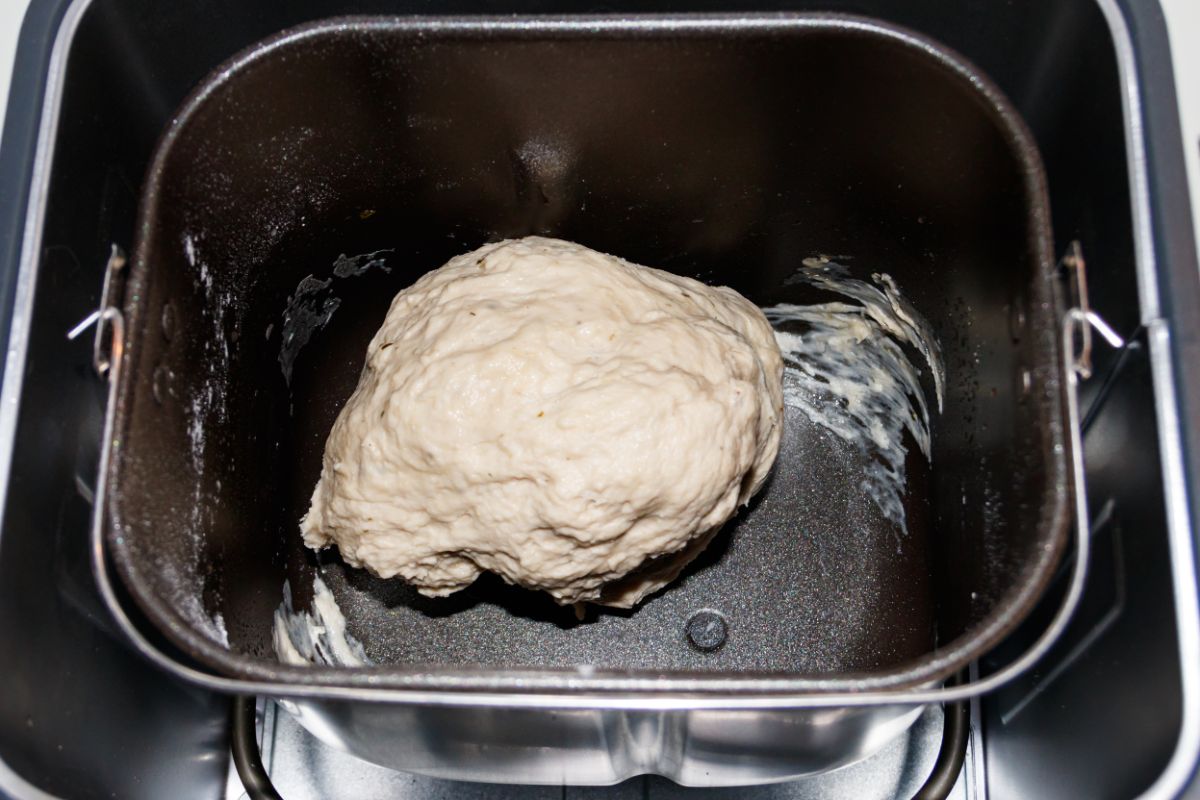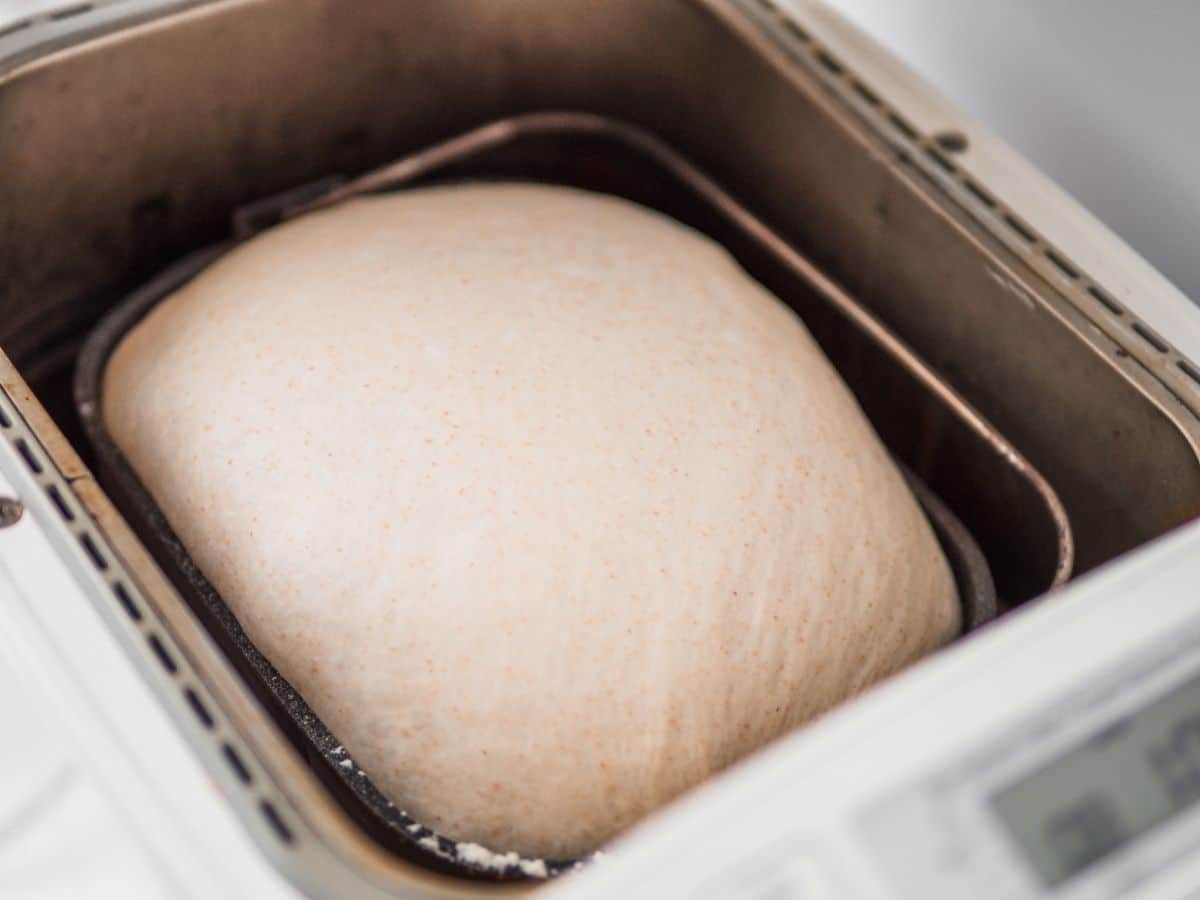Bread machines were invented to make our lives easier and help us enjoy freshly baked loaves of bread whenever we want, even if we don’t master the art of bread making or simply don’t have the time to do it.

However, using a bread machine doesn’t mean that the loaf of bread will always come out successful. Even when utilizing a bread machine, many things can go wrong.
One of these situations can be those moments when we leave the dough in a bread machine for too long.
So, how long to leave the dough in the bread machine? Ideally, you should not leave the dough inside the bread machine for too long. You could leave it to rise in there, but the limited space available inside the bread machine may not allow it to rise properly.
*This article may contain affiliate links. As an Amazon Associate, I earn from qualifying purchases. Please take that into account.
- Dutch oven
- Large mixing bowl
- Measuring cups and spoons
- Bread thermometer (fancy or a budget one)
- Scoring lame
Extra (nice to have):
- Kitchen scale
- Dough scraper and bowl scraper (yes, they are different)
- Cooling rack
- Baking stone (you don’t need a dutch oven if you use this)
👉Learn how to make bread and pizza with this awesome book.
The first step is to use your bread machine right
Although using a bread machine may not seem like such a complicated task, using it right is a major factor in enjoying perfect loaves of bread.
So, even the order of placing the ingredients in the bucket of the machine counts.
To avoid balls of flour remaining improperly mixed inside the dough, it would be a great idea to put the liquids first in the bucket. Then add the flour and, finally, the yeast, as you prefer it.
Don’t forget to activate the yeast, if required by the type you chose to use.
Bread machines will help us skip one of the most unpleasant or difficult parts of bread making. And that is the kneading part.
Once you place the ingredients inside the bread machine, it will begin mixing them and then proceed to knead the dough. When it is ready, you can get it out from the machine and shape it according to your preferences.
You can make it look like a baguette or form small dinner rolls out of it.
Just don’t do this before the dough rises. This means to allow the dough to stay inside the bread machine for a while after the kneading process is over.
So, yes, you should not take the dough out right away, but allow it to rest for a bit longer.
How much should the dough be left in the bread machine?

This depends on how large your bread machine is. If you consider that there’s plenty of space inside the machine, you could leave the dough to rise in there, without taking it out.
But, if you think that the space is too small, just take the dough out and place it in a bowl. Make sure the bowl is large enough to allow the dough to rise properly.
To keep it safe from dust and its temperature constant, it is recommended to cover the bowl with wrapping foil.
Bread dough should be allowed to rest for 30 to 40 minutes at least before you shape it and place it inside the oven. Of course, if you allow it to rest for longer, it won’t be an issue.
Just try not to leave it to rest for more than 12 hours. The fermentation process can affect the flavor of the future loaf of bread after so many hours.
If you plan to allow the dough to rest for more than 40 minutes, it would be recommended to take the dough out of the bread machine and allowed to rest in a bowl that is large enough. So, as you can see, leaving the dough in the bread machine for too long is not a good idea at all.
The limited space inside the machine will not allow the dough to rise properly. But, if you want to prepare a loaf of bread in the shortest period possible, by using the fastest program and bread machine yeast for fast-rising, then you can leave the dough inside the machine during this process.
Bread machines are great when it comes to kneading, but they won’t shape your loaf of bread
It is very convenient to place all the ingredients inside a machine and forget all about kneading. But, the downside of making bread dough with a bread machine is that the machine will not shape your dough. Once the kneading part is done, you will have to take it out and do this part.
Of course, it is not as difficult as kneading, plus you can give your loaf of bread a wide range of shapes. You can even break the dough into smaller bits and come up with dinner rolls or any other shapes you may enjoy.
Not to mention that you can also use egg yolk glaze on your loaf of bread or add seeds, and so on.
The shaping of the dough should be made after the dough finished rising. So, even if you take the dough out of the bread machine, you should allow it to rise for half an hour, at least, before you begin shaping it.
If you have the time or you are a patient person, you can allow the dough to rise for a bit longer after shaping, in its oven tray. Many people passionate about baking allow the dough to rise twice.
Once after kneading and once after the dough has been shaped and prepared for the oven. Of course, there will also be the oven spring, which will happen once the dough is introduced in the oven.
But, in order to take advantage of this part, you will have to preheat the oven before placing your bread dough inside.
So, a bread machine will help you skip over the most difficult part of bread making and that is kneading the dough. But, it is your duty to finish the dough as you like.
In case you’re not making a large loaf of bread, you can shape it and put it back in the bread machine, for baking. This depends on how much flour and yeast you used, how large is your bread machine, and how much the dough rose.
